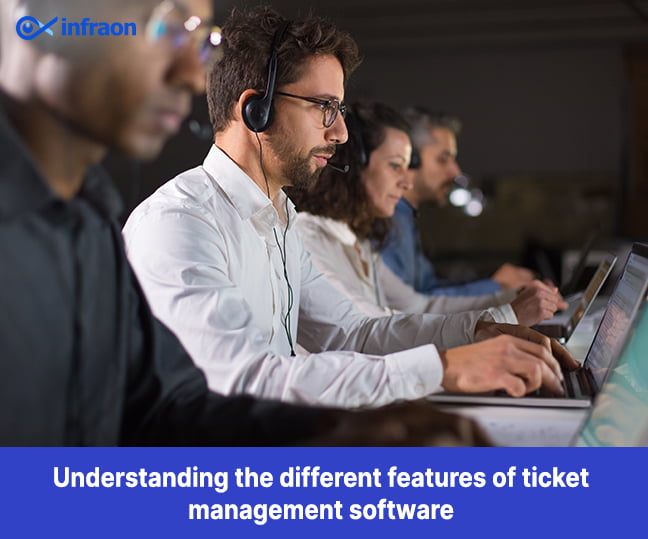Ticket management software is a valuable tool used to streamline and enhance customer support and issue resolution processes. It provides a centralized system for receiving, tracking, and resolving customer inquiries, complaints, and service requests, known as tickets.
Features of ticket management software
Here are some key features commonly found in ticket management software:
- Ticket Automation: Ticket automation is a feature that reduces manual effort and streamlines ticket management solutions. Repetitive tasks can be automated based on predefined rules. For example, when a ticket is submitted, the software can automatically assign it to the appropriate team or individual based on factors like ticket type, customer location, or issue priority. This automation ensures that tickets are efficiently directed to the right resources, saving time and preventing delays in resolution.
- Ticket Tags: Ticket tags are labels or categorization attributes that can be assigned to tickets. Users can create tags based on specific attributes such as issue type, priority, department, or customer segment. By tagging tickets, support agents and managers can organize and filter them based on these attributes. This makes prioritizing tickets easier, ensuring that the most critical or relevant issues receive prompt attention. Ticket tags also provide a way to group and analyze tickets based on common attributes.
- Customizable Ticket Templates: Ticket management software typically offers customizable ticket templates that allow businesses to define and design the structure and layout of their support tickets. This customization ensures consistency in ticket information and improves communication between support agents and customers. Businesses can include fields such as customer name, contact information, issue description, and any other relevant details. Customized templates make it easier for agents to gather necessary information from customers and provide a clear, standardized format for ticket handling.
- Individual Ticket Queues: Individual ticket queues provide dedicated spaces for support agents or teams to manage their tickets. This segregation ensures that tickets are efficiently handled and distributed among the appropriate teams or agents. Individual ticket queues help teams focus on their specific tasks, prevent confusion or duplication of effort, and enable better collaboration within the team.
- Reports and Analysis: Ticket management software often includes reporting and analysis features that provide insights into various metrics related to ticket management. These reports can include ticket volumes, response times, resolution rates, customer satisfaction levels, and more. By analyzing these metrics, businesses can monitor the performance of their support operations, identify bottlenecks or areas for improvement, and make data-driven decisions. Reports and analysis help in tracking key performance indicators, effectively evaluating the support processes, and optimizing resource allocation.
- Personalized Ticket Pages by Customer: Personalized ticket pages allow businesses to create dedicated spaces for each customer to view and track their submitted tickets. These pages provide a centralized location for customers to communicate with support agents, access relevant updates and information, and provide additional details if needed. By offering personalized ticket pages, businesses enhance the customer experience by providing transparency and convenience. Customers can easily keep track of their support interactions, view the status of their tickets, and access any related information without having to search through email threads or make repeated inquiries.
Conclusion:
Ticket management software is crucial in optimizing customer support processes by automating tasks, improving ticket organization, providing customization options, enabling efficient ticket handling, offering insightful reports, and enhancing customer experience. By leveraging these features, businesses can enhance their overall support operations, improve customer satisfaction, and streamline issue resolution, along with their IT asset management software.















